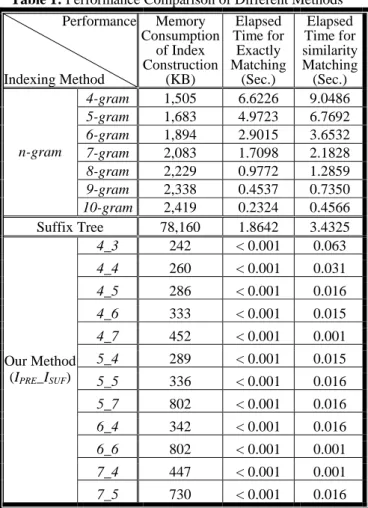Using Dual Ternary Indexing for Music Retrieval Systems
全文
(2) ‘Happy Birthday to You’. The query1 and query2 are two possible meaningful queries. Because they seem to be two clear phrases, while query3 and query4 are unlikely to be hummed. Unfortunately, using n-gram method (6-gram in this case), i3 that is composed of ‘sol-do-si-sol-sol-la’ and i4 that is composed of ‘do-si-sol-sol-la-sol’ are included in indexes. This phenomenon indicates that the indexes contain many unnecessary data. The space for storing indexes will become smaller when redundancies pruning is conducted. To reduce memory space requirement and enhance query processing, in this paper, we propose an efficient indexing approach based on the advantages of numeric indexing technique. Instead of textual indexing techniques, the performance of memory usage and retrieval for MIR by using numeric indexing techniques is better. The rest of this paper is organized as follows. In Section 2, we introduce terminologies and notations used in this paper. Section 3 describes the basic concepts of our proposed indexing techniques. In Section 4, we demonstrate the accomplished experimental results. Finally, in Section 5, we summarize this paper.. 2. TERMINOLOGY AND NOTATION. For example, suppose a phrase P with length of 4 is the first phrase that extracted from the song w2s1, the first index is 3 and the second index is 4, then the phrase P is denoted as (3, 4, w2s1, p1).. 3. THE PROPOSED INDEXING TECHNIQUES 3.1 DUAL TERNARY INDEXING APPROACH In order to decrease the size of indexes and accelerate music retrieval, we introduce the advantage of numeric indexing technique and propose an effective and efficient indexing structure. The essence of the proposed numeric indexing scheme is adoption of perceptually meaningful phrase to establish index unlike suffix tree and n-gram methods. Besides, the proposed method is regardless of phrase length, that is, it needs not to divide the phrases into overlapping constant-length subsequences in advance. Figure 4 shows the basic idea of the proposed numeric indexing structure. The extracted representative fragments (music phrases) are indexed by f(c), where f( ) is a mapping function while c is the melodic contour of music phrase. That is, a phrase with key c maps to slot f(c). Here, phrases have the same f(c) are stored in the same slot. The submitted query is used to retrieve phrases that have the same f(c).. To illustrate the proposed indexing strategies, introduce terminologies and notations used in this paper is necessary. In our method, music are segmented to phrases [10] and transformed into ternary melodic contours. Figure 3 sketches several terminologies. The definitions of specific terms used in this paper are as follows.. Figure 3. A simple diagram shows several terminologies. • P: melodic contour of a music phrase that intends to be indexed • PCi: the ith digit of phrase contour P • q: a query submitted by user • qci: the ith digit of query contour q • LI: the maximum index length of MIR system • LP: the length of phrase P • Lq: the length of query q A music phrase is denoted as a 5-tuple (IPRE, ISUF, length, Song_id, Phrase_num), where • IPRE indicates the first index of music phrase P. • ISUF indicates the second index of music phrase P • length denotes the length of music phrase P. • Song_id represents the identification number of the music. • Phrase_num is the serial number of segmented phrase that belongs to the music with the number of Song_id.. Figure 4. Basic idea of the proposed indexing structure. Because of the different segmentation for phrases between user’s cognition and MIR system’s judgment, user may submit a self-determined phrase that differs from original phrase segmented by MIR system. To handle various kinds of query cases, we adopt dual index structure. The first index IPRE and the second index ISUF are derived from the phrase P directly. In general, we can constrain the total length LI ≤ LI + LI of index to prevent the explosively increase of space requirement. The indexing functions are defined as L −1− i (1) I PRE = f ( PPRE ) = ∑ ii == 0LI PRE −1 PC LP −1− i × 3 I PRE PRE. SUF. I SUF = f ( PSUF ) = ∑ ii ==0LI SUF −1 PC i × 3. LI SUF −1− i. (2). To show feasibility and advantages of the proposed methods, all kinds of cases are considered and comprehensive discussions are made in the following. Case 1. If q=P, Lq ≤ LI and Lq ≤ L I SUF PRE. - 287 -.
(3) Eq.(5), since f (q1 PRE ) = ∑ii ==0LI PRE −1 qc Lq1 −1− i × 3. Figure 5. A diagram to explain Case 1. Figure 5 shows the concept of this case. According to Eq.(1) and Eq.(2), phrase P is indexed as I PRE = f ( PPRE ) = ∑ ii ==0LP −1 PC LP −1− i × 3 I SUF = f ( PSUF ) = ∑ii ==0LP −1 PC i × 3. LI PRE −1− i. LI SUF −1− i. (3). f (q 2 PRE ) = ∑ii ==0LI PRE −1 qc LP −1−i × 3 f (q 2 SUF ) = ∑ ii ==0LI SUF −1 qc i × 3. Case 3. if LP > LI = ( LI PRE + L I SUF ) and q=P. Figure 7. A diagram to explain Case 3. Consider Figure 7, it illustrates the case when the length of extracted phrase is longer than the length of system-allowed index. Due to the limitation of index length, phrase P is indexed as L −1− i (5) I PRE = f ( PPRE ) = ∑ ii ==0LI PRE −1 PC LP −1− i × 3 I PRE. (6). If q=P, we have f (q SUF ) = ∑ ii ==0LI SUF −1 qc i × 3. LI SUF −1− i. ≠ f ( PPRE ). LI SUF −1− i. = f ( PSUF ). . In this case, after the prefix query expansion process (will be described in the next subsection), system will return many recalls that have the same suffix as q2, of course including phrase P, in spite of f (q1PRE ) ≠ f ( PPRE ) .. Thus, phrase P can also be exactly retrieved.. LI PRE −1− i. LI PRE −1− i. and from Eq.(6) we obtain:. Figure 6. A diagram to explain Case 2. As shown in Figure 6, in this case, phrase P is indexed by Eq.(1) and Eq.(2). Since q=P, we have f (q PRE ) = f ( PPRE ) and f (q SUF ) = f ( PSUF ) .. f (q PRE ) = ∑ ii ==0LI PRE −1 qc Lq −1− i × 3. , the MIR system will carry out a process of suffix query expansion (will be described in the next subsection) and return many recalls that have the same prefix as q1, of course including phrase P, in spite of f (q1SUF ) ≠ f ( PSUF ) .. This case is similar to Case 4, if we assume the submitted query is q2, then from Eq.(5) we get:. Case 2. If q=P and Lq ≤ ( LLPRE + LLSUF − L( LPRE ∩ LSUF ) ). LI SUF −1−i. = f ( PPRE ). Case 5. if LP > LI = ( LI PRE + L I SUF ) and Lq 2 < L P. (4). Since q=P, we have f (q PRE ) = f ( PPRE ) and f (q SUF ) = f ( PSUF ) . Thus, phrase P can be exactly retrieved.. I SUF = f ( PSUF ) = ∑ii ==0LI SUF −1 PC i × 3. LI PRE −1− i. = f ( PPRE ). = f ( PSUF ) .. Hence, phrase P can be exactly retrieved.. 3.2 QUERY EXPANSION FOR SIMILARITY MATCHING. In addition to improve recall, the process of query expansion is conducted in our prototype system. The edit distance between two contours (strings) is defined as the number or cost of editing operations that must be performed to make the contours identical. In general, there are three kinds of editing operations, namely insertion (inserting a note), deletion (deleting a note), and substitution (replacing a note). The popular methods for measuring similarity between two strings are the dynamic programming algorithm [11] and the longest common subsequence algorithm [12]. Because of the array-based operation, they are spaceconsuming methods. Besides, searching the entire database will cause a seriously time-consuming problem. Our proposed numeric indexing approach can extend the ability of approximate matching easily by conduct a query expansion process. In our system, the goal of query expansion is to generate possible queries that similar to the original query q with certain edit distance d. Without losing any generality, we restrict the edit distance to 1 (d = 1) in our consideration, although it is easy to handle larger edit distance. The reason for this restriction is to reduce the explosively growth number of expanded queries. With the edit distance growth, the number of expanded query will become an inconsiderable status. (A)Query expansion for insertion error If d = 1, there are 3 × ( Lq + 1 ) − Lq queries will be. Case 4. if LP > LI = ( LI PRE + L I SUF ) and Lq1 < LP. This case is similar to Case 3, but the query is q1. By. expanded. The expansion function for insertion error is. - 288 -.
(4) define as ⎧ f ( q )× 3 + x , t =1 ⎪ ⎪Lqc −1 − 2 t ⎪ f ( qe ) = ⎨ ∑ qci × 3i +1 + x × 3t −1 + ∑ qci × 3i , 2 ≤ t ≤~ Lq ⎪i =t −1 i =0 ⎪ Lq , t = Lq + 1 ⎪⎩ f ( q ) + x × 3. where 1 ≤ t ≤ Lq + 1 and x ∈ {0, 1, 2} .. (7). For example, the original query q is assumed as “10120” with length of Lq = 5. By Eq.(7), queries ‘10120x’, ‘1012x0’, ‘101x20’, ‘10x120’, ‘1x0120’, and ‘x10120’ will be expanded. Here, {96, 258, 276, 285, 288, 289, 290, 291, 294, 312, 339, 420, 582} is the set of expanded queries. (B)Query expansion for deletion error If d = 1, there are Lq queries will be expanded. The expansion function for deletion error is define as ⎧i = Lq −1 ⎪ ∑ qc × 3i −1 , t =1 i ⎪ i t = ⎪ j =t − 2 ⎪⎪i = Lq −1 f ( qe ) = ⎨ ∑ qci × 3i −1 + ∑ qc j × 3 j , 2 ≤ t ≤ ~ Lq − 1 (8) ⎪ i =t j =0 ⎪ ⎪ j =t − 2 j , t = Lq ⎪ ∑ qc j × 3 ⎪⎩ j =0. where 1 ≤ t ≤ Lq and x ∈ {0, 1, 2} . (C)Query expansion for Substitution error If d = 1, there are 2Lq queries will be expanded. The expansion function for substitution error is define as ⎧i = Lq −1 ⎪ ∑ qc × 3i −1 , t =1 i ⎪ ⎪ i =t j =t − 2 ⎪⎪i = Lq −1 f ( qe ) = ⎨ ∑ qci × 3i −1 + ∑ qc j × 3 j , 2 ≤ t ≤ ~ Lq − 1 (9) ⎪ i =t j =0 ⎪ 2 j t = − ⎪ j , t = Lq ⎪ ∑ qc j × 3 ⎩⎪ j =0. Consider Figure 8, when submitting the input query q1 that is the left part (or prefix) of phrase P and Lq1 < L P . By Eq. (3), we should not expect to be able to retrieve the phrase P, because Lq1 −1− i Lq1 −1− i qc f ( q1 ) = ∑ ii = Lq1 −1− i × 3 =0 . ≠ ∑ i = LI −1 PC L P −1− i × 3 L P −1− i = f ( P ) i =0 This circumstance occurs frequently when the determination of MIR system for phrase segment is different from user’s perception. That is, the phrase P determined by MIR system with length of LP maybe segmented into many shorter phrases by users. If the input query q2 is the right part (or suffix) of phrase P and Lq 2 < L P , phrase P may be retrieved by carrying out the process of prefix query expansion. Query expansion is a technique commonly used in database system to improve recall. In this case, the goal of query expansion is to generate all possible queries that have the same suffix as input query. Thus, if Lq < L I , the amount of possible queries is 3( LI − Lq ) . This process resembles the similarity matching for text retrieval. Let us review Figure 8, suppose a phrase P = ‘010211’, L I = 8 , and query q2 = ‘0211’, we must expand 3 4. queries to retrieve all possible results that have the same suffix as query q2. Figure 9 shows the results of prefix query expansion. If query q1=’0102’ is submitted, since Lq1 ≤ L I , the process of suffix query expansion is conducted to retrieve possible music. Completing all possible expansions, there (L −L ). would result in 3 I q1 queries. In this case, 3 4 extra queries are expanded, as shown in Figure 10. Then, phrase P is retrieved when the process of query expansion is conducted.. where 1 ≤ t ≤ Lq and x ∈ {0, 1, 2} . (D)Prefix/Suffix query expansion. Figure 8. A diagram to explain query expansion.. Figure 9. Example of prefix query expansion when query q2 is the right part of phrase P.. Figure 10. Example of suffix query expansion when query q1 is the left part of phrase P.. - 289 -.
(5) In reality, the process of query expansion can be easily accomplished in our proposed indexing structure. The indexes are organized as a two dimensional array, the indexes in the same row have the same prefix, while the indexes in the same column have the same suffix. Hence, when a query q is submitted, the key of the q is calculated for exactly matching. Then, entries in the same row or column are retrieved for similarity matching. Figure11 and Figure 12 show the concepts of suffix query expansion and prefix query expansion, respectively. The shade indicates the possible retrieved phrases.. interval blocks for indexing [9]. Then, information of these melodic segments, such as the title and the occurrence position of the song, are stored in interval blocks. In exactly matching, we retrieve songs that contain identical piece with the query. In similarity matching, we retrieve songs that have the same melodic contour of query. Table 1: Performance Comparison of Different Methods Performance Memory Elapsed Elapsed Consumption Time for Time for of Index Exactly similarity Construction Matching Matching Indexing Method (KB) (Sec.) (Sec.) 4-gram 1,505 6.6226 9.0486 5-gram 1,683 4.9723 6.7692 6-gram 1,894 2.9015 3.6532 n-gram 7-gram 2,083 1.7098 2.1828 8-gram 2,229 0.9772 1.2859 9-gram 2,338 0.4537 0.7350 10-gram 2,419 0.2324 0.4566 Suffix Tree 78,160 1.8642 3.4325 4_3 242 < 0.001 0.063. Figure 11. The concept of suffix query expansion.. Our Method (IPRE_ISUF). Figure 12. The concept of prefix query expansion. 4. EXPERIMENTAL RESULTS To evaluate the effectiveness and efficiency of the proposed indexing method, we performed an extensive performance study of three methods: n-gram, suffix tree, and the proposed numeric indexing, with various kinds of index length. We collected more than 1,000 MIDI files from the public domain to form the music database. To construct the music database, the melody data have to be extracted first. After melody extraction, the music database consists of over 374,000 notes. We transformed each song into note string. To evaluate the proposed numeric indexing approach, we segmented the melodic contours of song into perceptually meaningful phrases [10]. By pruning the repeating phrases, there are about 18,000 phrase stored in music database. For n-gram method, we transform note strings into melodic contours. Consider a melodic contour with length of n. We partition the melodic contours to n − m + 1 successive segments with specific length m and construct. 4_4. 260. < 0.001. 0.031. 4_5. 286. < 0.001. 0.016. 4_6. 333. < 0.001. 0.015. 4_7. 452. < 0.001. 0.001. 5_4. 289. < 0.001. 0.015. 5_5. 336. < 0.001. 0.016. 5_7. 802. < 0.001. 0.016. 6_4. 342. < 0.001. 0.016. 6_6. 802. < 0.001. 0.001. 7_4. 447. < 0.001. 0.001. 7_5. 730. < 0.001. 0.016. For suffix tree method, the goal of exactly matching is to traverse from the root of suffix tree to a specific leaf node according to the query string. Under the limitation of the depth for searching, the similarity matching is to return all leaves under a specific internal node. For the proposed numeric indexing approach, the task of exactly matching is to retrieve all phrases that have both the same prefix and suffix as query. In addition, the task of similarity matching is to retrieve all phrases that have either the same prefix or suffix as query. All experiments were conducted on a 2.8 GHz Intel Pentium 4 PC with 1G main memory, running Microsoft Windows XP professional. Table 1 demonstrates the memory usage for indexing and elapsed time for retrieving. In the aspect of memory usage, the suffix tree method is the worst (76 MB) because it enumerates all suffixes. The disk space cost by the n-gram method in various lengths are about 1~2 MB. The proposed numeric indexing. - 290 -.
(6) method can dramatically reduce the space requirement for storing indexes. In the aspect of retrieving performance, we randomly select 20 music excerpts as queries for further validation. Compare to these methods, using the proposed numeric indexing method can greatly decrease the elapsed time for exactly matching and similarity matching. The depth of indexing is the most important factor which dominates the performance of that using suffix tree method. In the proposed numeric indexing approach, no matter what the index length is, the elapsed time for exactly matching is quite small (<0.001 second). 5. CONCLUSIONS. In this paper, we mainly focus on two issues: the size of indexes and the time for retrieving music. Because the indexes are full of redundancies by using pre-existing indexing methods, we adopt music phrase as the basic unit for further processing. In addition to overcome the difficulties caused by the difference between phrase extracted by system and phrase segmented by user, we introduced numeric indexing approach. Besides, the proposed indexing approach not limit to the length of phrase for indexing or querying. The experimental results demonstrate that our method performs more efficient and effective compared with the pre-existing methods. 6. REFERENCES. [1]A. Ghias, H. Logan, D. Chamberlin, and B.C. Smith, “Query by Humming:Musical Information Retrieval in an Audio Databases,” Proc. of the 3rd ACM International Conference on Multimedia, pp. 231-236, 1995. [2]A L.P. Chen, M. Chang, J. Chen, J.L. Hsu, C.H. Hsu, and S.Y.S. Hua, “ Query by Music Segments: An Efficient Approach for Song Retrieval " Proc. of. IEEE International Conference on Multimedia and Expo pp. 873-876 2000. [3]J.L. Hsu, C.C. Liu, and A.L.P. Chen, “Discovering Nontrivial Repeating Patterns in Music Data,“ IEEE Transactions on Multimedia, pp. 311-325, 2001. [4]W. Lee, and A.L.P. Chen, “Efficient Multi-Feature Index Structures for Music Data Retrieval," Proc. of SPIE Conference on Storage and Retrieval for Image and Video Databases, pp. 177-188, 2000. [5]E. M. McCreight, “A Space-Economical Suffix Tree Construc-tion Algorithm,” Journal of Algorithms, vol. 23(2), pp. 262-272, 1976. [6]E. Ukkonen, “On-line Construction of Suffix Trees,” Algorithmica, Vol. 14(3) pp. 249-260, 1995. [7]S. Downie and M. Nelson, “Evaluation of a simple and effective music information retrieval method,” Proc. of 23rd Annual International ACM SIGIR Conference on Research and Development in Information Retrieval, pp. 73-80, 2000. [8]C. L. Yip and B. Kao, “A Study on N-gram Indexing of Music Features,” Proc. of IEEE International Conference on Multimedia and Expo, pp. 869-872, 2000. [9]C.W. Chang, C.Y. Chang and H.C. Christine Jiau, “A Practical Music Retrieval System Based on Sliding Melodic Contour,” Proc. of International Computer Symposium, pp. 1162-1167, 2004. [10]C.W. Chang and H.C. Christine Jiau, “Representative Music Fragments Extraction by Using Segmentation Techniques,” Proc. of International Computer Symposium, pp. 1156-1161, 2004. [11]S. B. Needleman and C. D. Wunsch, “A general method applicable to the search for similarities in the amino acid sequence of two sequences,” Journal of Molecular Biology, pp. 443-453, 1970. [12]H. Thomas, et al, Introduction to Algorithms, The MIT press, 2001.. - 291 -.
(7)
數據
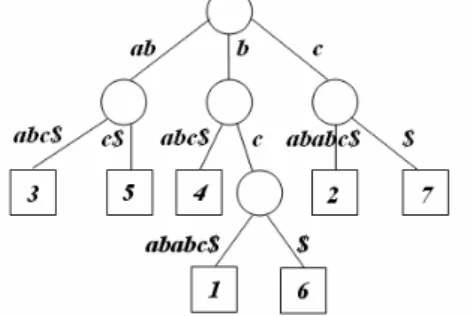
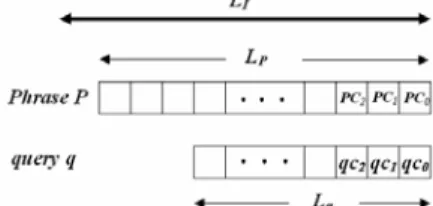
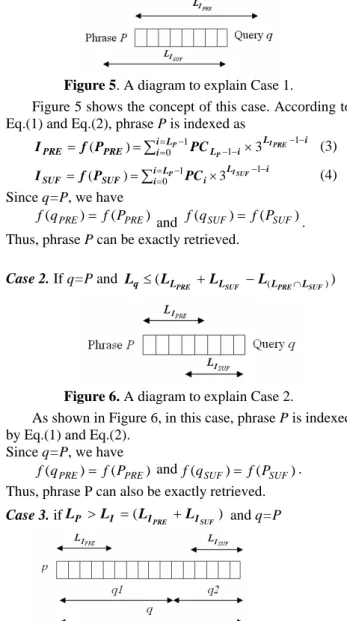
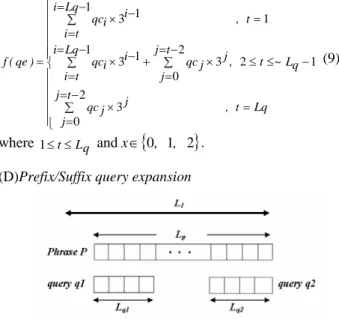
相關文件
Retrieval performance of different texture features according to the number of relevant images retrieved at various scopes using Corel Photo galleries. # of top
Microphone and 600 ohm line conduits shall be mechanically and electrically connected to receptacle boxes and electrically grounded to the audio system ground point.. Lines in
/** Class invariant: A Person always has a date of birth, and if the Person has a date of death, then the date of death is equal to or later than the date of birth. To be
• Information retrieval : Implementing and Evaluating Search Engines, by Stefan Büttcher, Charles L.A.
Results indicate that the proposed scheme reduces the development cost, numbers of design change, and project schedule of the products, and consequently improve the efficiency of
In the proposed method we assign weightings to each piece of context information to calculate the patrolling route using an evaluation function we devise.. In the
The results show the effectiveness of PBC on road maintenance project through the flexibility of works and encouragement of using preventive maintenance methods.... 第一章
Investigating the effect of learning method and motivation on learning performance in a business simulation system context: An experimental study. Four steps to
